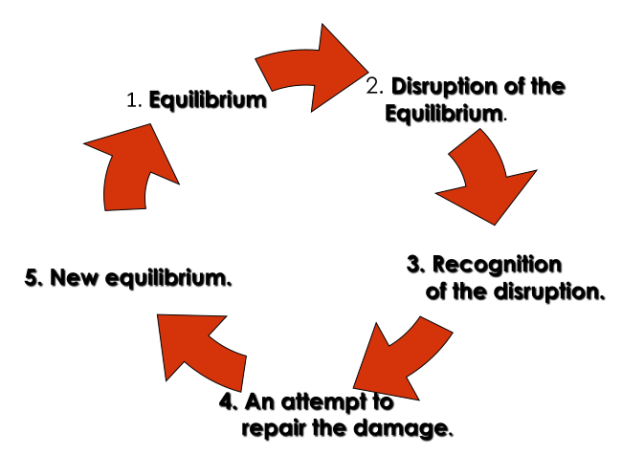There are five stages the narrative or story line can go through which are:
- Equilibrium (the start of the story, everything as it should be)
- A disruption of that order by something that happens
- The narrative recognises something has happened.
- There is an attempt to repair the damage of the disruption
- A return of a new equilibrium
In my group we applied this to our own narrative:
Equilibrium
- The audience will see a funeral taking place, it will be a father that has died, the family go on holiday in Canada. The sons goes to look around the area and he is gone for more than two hours.
Disruption
- The mum goes out to look for him. They can't continue as they have found a forest fire, there is no sittings of the boy named Morgan. Missing posters are put up, they find six small bones but they have no fire damage on them. The fathers twin brother dug them up from another child's grave to make it look like Morgan died. At this point, the audience don't know where the bones have come from and don;t know of the twin brother. Rose sees a picture of Morgan and a man who she believes is her husband. They go to the fair straight away because that is where the picture was taken.
Resolution
- The man in the newspaper doesn't have a scar under his eye like her husband does. Calls the police and asks them to see if her husband really did die, during their searches they find a man that looks similar to her husband and who has the same birthday. Eventually track the twin brother down and take him to the police station to be questioned. The film ends with the audience seeing the twin brother being questioned but you won't hear his response. Meaning there is no resolution to the story.
Another theory that I will look at is Vladimir Propp's character theory. Propps was a Russian theorist who studied fairy-tales and folklore. He identified plot elements and developed this into an 8 spheres of action narrative theory. He developed a character theory for studying media texts and productions and this indicated that there were 7 broad character types in the 100 tales he analysed which could be applied to other pieces of media. There 7 character types were:
- The villain - they struggle against the hero
- The donor - they prepare the hero and give the hero something to help them on their quest/journey
- The helper - they help the hero in the quest
- The princess - person he hero usually marries or they are a love interest for the hero
- The false hero - they are seen as good at the beginning but then emerge as evil
- The dispatcher - the person who sends the hero on their quest
- The hero - they are either the victim/seeker/winner - they react to the donor and get their love interest which could be seen as a reward for them fulfilling their quest/mission
When planning our title sequence and film, we used Propp's theory:
- The villain - Leonardo DiCaprio - he kidnaps the child
- The hero - Paul Dano - he is the police officer and helps the family find their missing son
- The donor - Courtney Cox - she helps the hero find her son because she gives him information which helps his case
As our film doesn't need a lot of characters in it we wouldn't fully apply Propp's theory to our film but if we were to re-think the cast we could fully apply Propp's theory and have all 7 character types.

This comment has been removed by a blog administrator.
ReplyDeleteAdd a post on STINCS - make a moodboard
ReplyDelete